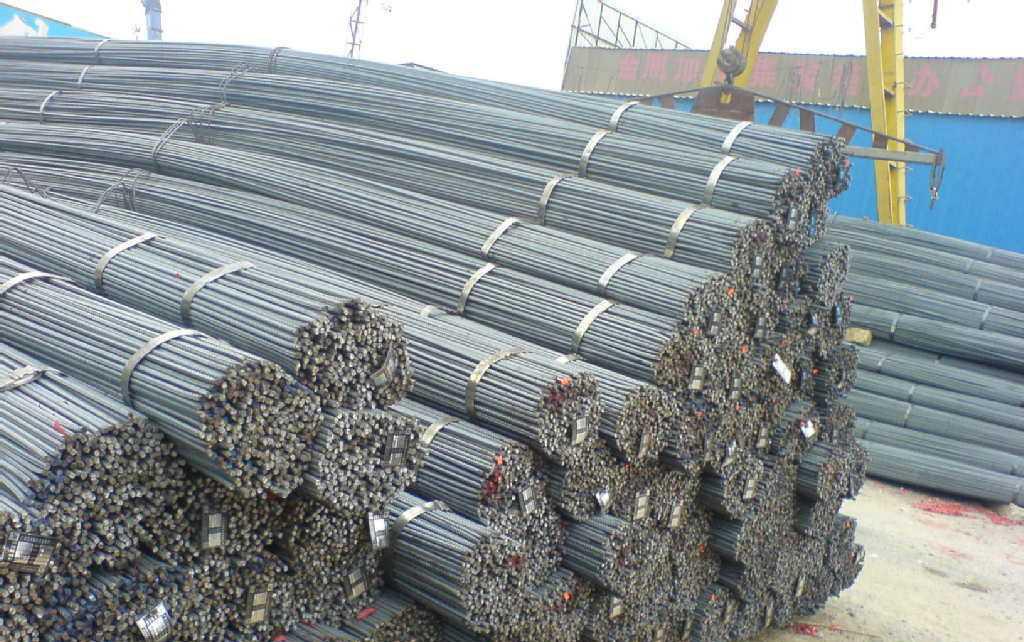鋼筋混凝土結(jié)構(gòu)設(shè)計中存在的問題
Problems in Design of Reinforced Concrete Structures
1結(jié)構(gòu)體系不合理
1. unreasonable structure system
鋼筋混凝土結(jié)構(gòu)在進行設(shè)計時�,設(shè)計人員需要結(jié)合工程結(jié)構(gòu)特點�����,同時參考抗震等級以及風荷載情況�,選擇合理的結(jié)構(gòu)體系。但是�,如果選擇的結(jié)構(gòu)體系不合理,將會影響結(jié)構(gòu)的穩(wěn)定性�����,使其結(jié)構(gòu)性能降低,如果設(shè)計人員選擇的設(shè)計指標不科學���,也將會降低結(jié)構(gòu)設(shè)計的可行性和科學性�,導致建筑質(zhì)量出現(xiàn)問題�����,甚引發(fā)事故�。
In the design of reinforced concrete structures, designers need to choose a reasonable structure system according to the characteristics of Engineering structures, seismic grade and wind load. However, if the selected structural system is not reasonable, it will affect the stability of the structure and reduce its structural performance. If the design indicators chosen by the designers are not scientific, it will also reduce the feasibility and scientificity of the structural design, resulting in problems in building quality and even lead to safety accidents.
2下部結(jié)構(gòu)設(shè)計中存在的問題
2. Problems in the design of substructure
?����。?)地下室底板設(shè)計���。由于建筑上部結(jié)構(gòu)受到的荷載致使柱下獨立基礎(chǔ)和地下室頂板發(fā)生沉降變形�。設(shè)計時如果對這種情況不能引起足夠的重視�,則會導致地下室頂板承受壓力過大,超過極限后極容易發(fā)生斷裂現(xiàn)象���,導致建筑發(fā)生傾斜甚結(jié)構(gòu)斷裂�����。(2)地下室底板配筋不合理�。地下室作為基礎(chǔ)結(jié)構(gòu)的一部分,具有增強建筑物結(jié)構(gòu)的穩(wěn)定性�、承載能力以外,還能削減地震破壞程度�。在地下室設(shè)計時,若地下室底板配筋不合理�,會導致鋼筋混凝土結(jié)構(gòu)出現(xiàn)失穩(wěn)現(xiàn)象,增加建筑物的不均勻沉降量���。(3)天然基礎(chǔ)設(shè)計不合理���。在對天然地基中的獨立基礎(chǔ)進行設(shè)計時,采用了不合理的設(shè)計���,斜面坡度大于1:3�����,這使得地基混凝土振搗不密實�����,影響振搗質(zhì)量�,影響地基結(jié)構(gòu)的穩(wěn)定性。實際施工過程中�����,常運用人工振搗拍打的方式振搗混凝土���,但是振搗質(zhì)量不易控制���,甚不能達到設(shè)計要求強度。(4)地下水位的影響���。在鋼筋混凝土結(jié)構(gòu)設(shè)計中,地下水位的影響對其結(jié)構(gòu)的穩(wěn)定性影響較大�,在設(shè)計過程中應(yīng)尤其注意地下水位變化較大的地方,重視建筑防水及降水問題���,對建筑工程施工進度以及質(zhì)量控制有重要的作用���。同時,整個建筑基礎(chǔ)結(jié)構(gòu)設(shè)計中���,基礎(chǔ)受到上部結(jié)構(gòu)荷載作用���,一旦發(fā)生沉降變化�����,地下室頂板和柱子將共同受力�����。
(1) Basement floor design. Because of the load on the superstructure of the building, the settlement and deformation of the independent foundation under the column and the roof of the basement occur. If we do not pay enough attention to this situation in design, it will cause the basement roof to bear too much pressure, and it will easily break after exceeding the limit, leading to the inclination of the building and even structural fracture. (2) The reinforcement of basement floor is unreasonable. Basement, as a part of infrastructure, can not only enhance the stability and bearing capacity of building structure, but also reduce the degree of earthquake damage. In basement design, unreasonable reinforcement of basement floor will lead to instability of reinforced concrete structures and increase the uneven settlement of buildings. (3) The design of natural foundation is unreasonable. In the design of independent foundation in natural foundation, unreasonable design is adopted. The slope is more than 1:3, which makes the vibration of foundation concrete not compact, affects the quality of vibration, and affects the stability of foundation structure. In the actual construction process, manual vibration is often used to vibrate concrete, but the quality of vibration is not easy to control, or even can not meet the design strength requirements. (4) The influence of groundwater level. In the design of reinforced concrete structure, the influence of groundwater level has a great influence on the stability of its structure. In the design process, special attention should be paid to the place where the groundwater level changes greatly, and attention should be paid to the waterproof and dewatering of buildings, which plays an important role in the construction progress and quality control of construction projects. At the same time, in the design of the whole building foundation structure, the foundation is subjected to the load of the superstructure. Once the settlement changes, the basement roof and the pillar will bear the force together.
上部結(jié)構(gòu)設(shè)計中存在的問題
Problems in Superstructure Design

在鋼筋混凝土結(jié)構(gòu)設(shè)計中�,上部結(jié)構(gòu)相對與下部結(jié)構(gòu)來說���,理論較為成熟�����,存在的問題也相對較少�,主要體現(xiàn)在三個方面:���,框架剪力墻設(shè)計時�����,如果設(shè)計不合理���,則會導致應(yīng)力較為集中���,威脅建筑結(jié)構(gòu)的性,當發(fā)生地震時���,建筑結(jié)構(gòu)容易出現(xiàn)坍塌���,另外,剪力墻分布不均也會增加框架剪力墻連接構(gòu)件的設(shè)計難度�,不利于建筑結(jié)構(gòu)的穩(wěn)定性和可靠性。其次�����,在以鋼筋混凝土結(jié)構(gòu)為主的建筑中���,抗側(cè)力主要的構(gòu)件是鋼筋混凝土,因此�,鋼筋混凝土結(jié)構(gòu)測量位移必須要滿足規(guī)定的側(cè)向位移限值,如果超過限值�,將會導致建筑結(jié)構(gòu)的穩(wěn)定和受到影響。后�,裂縫問題是鋼筋混凝土工程中不可忽視的部分�,分為構(gòu)造裂縫和結(jié)構(gòu)裂縫�����,其中構(gòu)造裂縫是由于施工技術(shù)人員操作不當或者不規(guī)范導致的���,如混凝土振搗不充分�����、水灰比不合理���、養(yǎng)護不到位,模板位置改變或者過早脫模等均會導致構(gòu)造裂縫的發(fā)生�����。而結(jié)構(gòu)裂縫出現(xiàn)在鋼筋混凝土結(jié)構(gòu)的澆筑過程中�,這是由于不同構(gòu)件之間的剛度存在差異,形成了剛度薄弱區(qū)域�,導致結(jié)構(gòu)中出現(xiàn)裂縫,常見于樓板頂端或者墻角等位置�����。
In the design of reinforced concrete structures, the theory of superstructure is relatively mature and the existing problems are relatively few, which are mainly reflected in three aspects: first, if the design of frame shear wall is unreasonable, it will lead to more concentrated stress and threaten the safety of the building structure. When earthquake occurs, the building structure is prone to collapse. The uneven distribution of shear walls will also increase the difficulty in the design of frame-shear wall connections, which is not conducive to the stability and reliability of building structures. Secondly, in the building with reinforced concrete structure as the main component, the most important component to resist lateral force is reinforced concrete. Therefore, the measured displacement of reinforced concrete structure must meet the prescribed lateral displacement limit. If it exceeds the limit, the stability and safety of the building structure will be affected. Finally, the problem of cracks is an important part in reinforced concrete engineering, which can be divided into structural cracks and structural cracks. The structural cracks are caused by improper or non-standard operation of construction technicians, such as inadequate vibration of concrete, unreasonable water-cement ratio, inadequate maintenance, change of template position or premature demoulding. The structural cracks occur in the pouring process of reinforced concrete structure, which is due to the stiffness difference between different components, forming a weak stiffness area, resulting in cracks in the structure, often at the top of the floor or corner.
4結(jié)構(gòu)抗震設(shè)計存在的問題
Existing Problems in Seismic Design of 4 Structures
鋼筋混凝土結(jié)構(gòu)設(shè)計時,一定要考慮結(jié)構(gòu)的抗震性能等級�,這對建筑的使用具有十分重要的意義。地震是較為常見的自然災(zāi)害�����,其對建筑結(jié)構(gòu)的影響是由內(nèi)而外的���,地震縱波對建筑物結(jié)構(gòu)施加作用力�,導致堅固的結(jié)構(gòu)外表出現(xiàn)松動等�����、裂縫等變化�,嚴重威脅著建筑結(jié)構(gòu)的穩(wěn)定性。雖然我國不是地震頻發(fā)的���,但近幾年幾場較大地震災(zāi)害的發(fā)生以及以往的經(jīng)驗也表明了�����,具有高抗震等級的建筑物在地震中穩(wěn)固性和性相對較高,因此�,提高建筑物的抗震性能是當前人們關(guān)注的�。由于鋼筋混凝土結(jié)構(gòu)本身具有的特性���,使其抗震性能較低���,這也是當前需要的問題。
In the design of reinforced concrete structures, the seismic performance grade of structures must be considered, which is of great significance to the safety of buildings. Earthquakes are common natural disasters, which affect the structure of buildings from the inside to the outside. The longitudinal wave of earthquakes exerts a force on the structure of buildings, resulting in changes in the appearance of solid structures such as loosening, cracks and so on, which seriously threatens the stability of building structures. Although China is not a country with frequent earthquakes, the occurrence of several major earthquake disasters in recent years and past experience also show that buildings with high seismic grade have relatively high stability and safety in earthquakes. Therefore, improving the seismic performance of buildings is the focus of current attention. Because of the characteristics of reinforced concrete structure itself, its seismic performance is low, which is also a key problem to be solved at present.


 咨詢熱線: 13605413762
咨詢熱線: 13605413762
